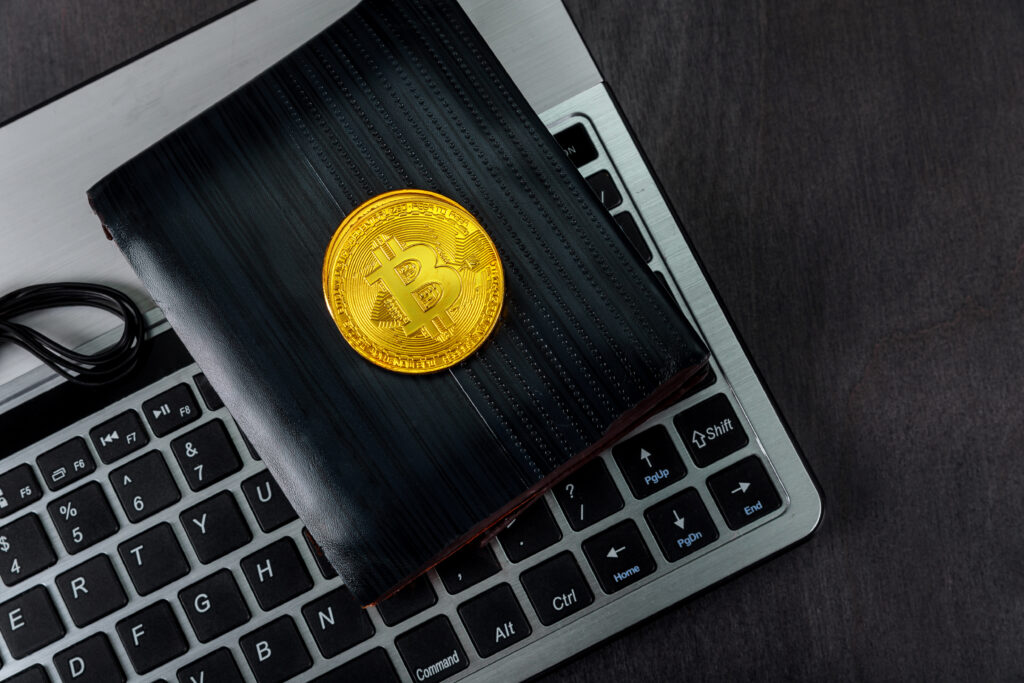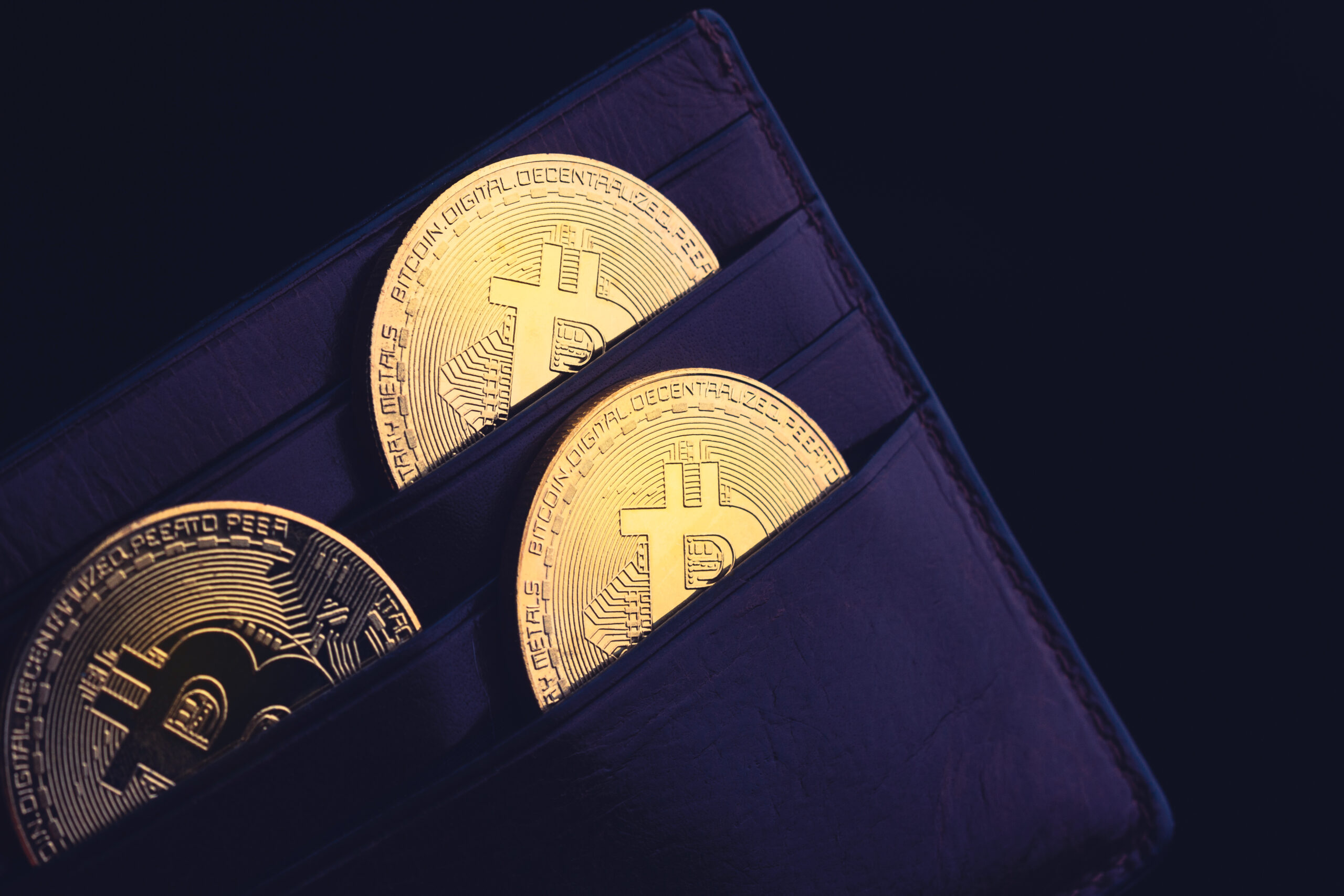Introduction:
In the world of cryptocurrency, security is paramount. While digital currencies like Bitcoin, Ethereum, and countless altcoins are revolutionizing the financial landscape, their decentralized nature also presents a significant challenge .How to securely store them using Cold Storage Wallets . Unlike traditional banking systems, cryptocurrencies are not backed by any central authority or insured by governments. This makes them highly vulnerable to cyber threats such as hacking, phishing, and theft.

The solution for many cryptocurrency holders seeking to protect their assets lies in the utilization of cold storage wallets. Cold storage wallets provide an offline method to store cryptocurrencies, making them nearly immune to online attacks. Unlike hot wallets, which are connected to the internet and often susceptible to cybercriminals, cold storage wallets offer an additional layer of defense. In this article, we will discuss what cold storage wallets are, why they are the safest way to store your crypto, the different types of cold storage wallets, and how to use them properly to safeguard your digital assets.
1:What Are Cold Storage Wallets?
Cold storage wallets, also referred to as “cold wallets,” are physical devices or offline methods used to safeguard cryptocurrencies securely. They function by keeping the private keys (which are required to access and spend your cryptocurrency) completely disconnected from the internet. This separation from online networks significantly reduces the risk of hacking and unauthorized access.
There are two primary types of cold storage wallets:
- Hardware Wallets: These are physical devices specifically designed to securely store private keys offline.
- Paper Wallets: A paper wallet is a printed or written representation of your private and public keys, which you can store in a safe location.
By keeping your private keys offline, cold storage wallets make it nearly impossible for hackers to access your funds remotely, offering a level of protection that online or “hot” wallets simply cannot provide.
2:Why Cold Storage Wallets Are the Safest Option:
1. Protection from Hacking and Cyber Threats
The primary advantage of using a cold storage wallet is protection from online attacks. In a world where cybercrime is rampant, the threat of hackers stealing digital assets is ever-present. Hot wallets, which are always connected to the internet, are much more susceptible to these attacks.
On the other hand, cold storage wallets are immune to internet-based attacks because they operate offline. Whether you’re using a hardware wallet or a paper wallet, your private keys are not exposed to any risks of online vulnerabilities, such as phishing scams or malware.
2. Protection from Exchange Failures or Bankruptcy
Many cryptocurrency owners store their digital assets in online exchanges, assuming that their funds are safe in these platforms. However, exchange failures, cyberattacks, or even the bankruptcy of the exchange itself can result in the loss of funds. For example, the collapse of Mt. Gox in 2014 led to the loss of approximately 850,000 Bitcoin, a stark reminder of the risks associated with trusting third-party services to safeguard your assets.
With a cold storage wallet, you control your private keys and are not reliant on any third-party service or platform. This autonomy minimizes the risk of losing access to your funds due to exchange failures.
3. Long-Term Security
If you plan to hold onto your cryptocurrency for the long term, cold storage wallets are your best option. Storing your crypto assets in a hot wallet exposes them to the constant risks of online attacks. However, cold storage allows you to lock your funds away for months or even years without worrying about them being compromised.
Many investors use cold storage wallets for “HODLing” (holding onto) their cryptocurrency long-term, knowing that their assets are secure from cybercriminals.

4. Control and Ownership
With a cold storage wallet, you maintain full control and ownership of your digital assets. In contrast to exchanges and custodial wallets, which store your private keys on your behalf, cold storage wallets ensure that no third party has access to your funds. This provides a sense of security and peace of mind, knowing that only you can access and manage your cryptocurrency.
3:Different Types of Cold Storage Wallets:
Now that we’ve established the security advantages of cold storage, let’s take a deeper look at the two primary types of cold storage wallets: hardware wallets and paper wallets.
Hardware Wallets
Hardware wallets are physical devices that store private keys offline. These wallets are considered one of the most secure ways to store cryptocurrencies, as they are built with advanced security features to prevent theft and unauthorized access. Some popular hardware wallets include:
- Ledger Nano S / Ledger Nano X
- Trezor Model One / Trezor Model T
- KeepKey
How Hardware Wallets Work:
Hardware wallets generate and store private keys in a secure chip embedded in the device. These wallets require a PIN or password to access, and transactions are signed on the device itself, ensuring that your private keys never leave the wallet or come into contact with potentially unsafe computers or networks. Once a transaction is signed, it can be sent to the blockchain via a connected device, but at no point are your private keys exposed online.
Pros of Hardware Wallets:
- Extremely secure, with private keys stored offline.
- Easy to use and compatible with many cryptocurrencies.
- Often comes with additional security features like backup seed phrases and passphrase protection.
- Can be used on multiple devices (PC, smartphone, etc.).
Cons of Hardware Wallets:
- Physical device that could be lost or damaged.
- Not entirely immune to physical theft if not stored securely.
- Cost (compared to free online wallets).
Paper Wallets
A paper wallet is a physical printout (or written record) of your cryptocurrency’s private and public keys. Paper wallets can be created through various online generators, which produce a public address (to receive funds) and a private key (to access funds).
How Paper Wallets Work:
To generate a paper wallet, users usually access a paper wallet generator website, create their private and public keys, and then print the wallet or write the keys down. Since paper wallets are offline, the keys are not exposed to online threats. The public address can be used to receive funds, while the private key is required to access and spend the stored cryptocurrency.
Pros of Paper Wallets:
- Completely offline and immune to online threats.
- Free to create and use.
- Can store multiple cryptocurrencies.
- Portable and easy to store in a secure physical location.
Cons of Paper Wallets:
- Vulnerable to physical damage (water, fire, wear and tear).
- If lost or stolen, the crypto is unrecoverable.
- Risk of human error (e.g., losing the paper or writing down the wrong key).
4. How to Use a Cold Storage Wallet Safely:
1. Setting Up a Hardware Wallet
Setting up a hardware wallet is simple, but it’s crucial to follow the manufacturer’s instructions to ensure the device is properly configured. Here’s a step-by-step guide to setting up a hardware wallet:
- Purchase a hardware wallet from an authorized retailer or the official website to avoid counterfeit devices.
- Install the appropriate software: Most hardware wallets come with accompanying software (e.g., Ledger Live for Ledger devices or Trezor Suite for Trezor devices).
- Create a secure PIN: The hardware wallet will prompt you to set up a PIN code to access the wallet. Choose a strong and unique PIN.
- Backup your recovery seed: The device will generate a 12-24 word recovery seed that you must record and store safely. This seed is your only way to restore your wallet if it is lost or damaged.
- Transfer your funds: After setup, you can move your cryptocurrency to the wallet’s address. The private keys will remain securely stored offline.
2. Setting Up a Paper Wallet
Creating and storing a paper wallet requires careful attention to detail. Here’s how to do it:
- Use a trusted paper wallet generator: Websites like bitaddress.org or walletgenerator.net are commonly used to create paper wallets.
- Create a new wallet: These websites will generate a public address and a private key. Ensure you generate them offline for added security (e.g., by downloading the generator and running it without an internet connection).
- Print or write down the keys: After generating the wallet, print it on paper or manually write down the keys. Ensure that the print is clear and legible.
- Store it securely: The most important part of using a paper wallet is storing it in a protected location—like a safety deposit box or a fireproof safe. If the paper wallet is lost or destroyed, the cryptocurrency is irretrievable.
5. Cold Storage Wallet Best Practices:
To ensure the highest level of security for your cold storage wallet, follow these best practices:
- Backup Your Recovery Seed: Always store your hardware wallet’s recovery seed in multiple secure locations. Do not store the seed digitally, as it could be exposed to hackers.
- Use Multi-Signature Wallets: Multi-signature wallets require multiple private keys to authorize a transaction. This adds an extra layer of security, as multiple devices or people need to approve transactions.
- Regularly Update Your Wallet’s Firmware: If you’re using a hardware wallet, ensure that you keep its firmware updated. Manufacturers often release security patches that can help protect against new threats.
- Store Paper Wallets in a Secure Location: Physical security is paramount for paper wallets. Consider using a safety deposit box, a fireproof safe, or a bank vault to store your paper wallets.
- Be Aware of Phishing Attacks: Even though cold storage wallets are protected from online threats, be vigilant against phishing attacks that attempt to trick you into revealing your recovery seed or private keys.
Conclusion:
Cold storage wallets offer the highest level of security for cryptocurrency holders. By keeping your private keys offline, these wallets protect your digital assets from cyber threats, exchange failures, and other online vulnerabilities. Whether you choose a hardware wallet or a paper wallet, understanding the importance of cold storage and how to use it effectively is essential for safeguarding your crypto investments. In a world where online threats are becoming increasingly sophisticated, cold storage is the safest way to store your crypto assets and maintain control over your financial future.
Faqs:
1. What is a cold storage wallet, and how does it work?
A cold storage wallet is a cryptocurrency storage method that keeps your private keys offline, away from the internet. This isolation reduces the risk of hacking, theft, or cyberattacks. Cold storage wallets can be physical devices like hardware wallets or offline methods like paper wallets, ensuring your digital assets remain secure without exposure to online threats.
2. What are the main differences between a cold storage wallet and a hot wallet?
The main difference is that cold storage wallets are completely offline, making them more secure from online threats like hacking. In contrast, hot wallets are connected to the internet, making them more convenient for frequent transactions but also more vulnerable to cyberattacks. Cold storage wallets are ideal for long-term holding, while hot wallets are suited for daily or short-term use.
3. Are cold storage wallets completely safe?
While cold storage wallets offer significantly enhanced security compared to hot wallets, they are not completely immune to risk. Physical damage (for paper wallets) or theft (for hardware wallets) can still pose a threat. However, by following best practices such as storing backups securely and keeping hardware wallets in safe locations, you can minimize these risks.
4. Can I use a cold storage wallet for all types of cryptocurrency?
Yes, most cold storage wallets support a wide range of cryptocurrencies, including Bitcoin, Ethereum, Litecoin, and many others. However, compatibility varies depending on the wallet type (hardware or paper) and the specific wallet brand. Always check the wallet’s supported cryptocurrencies before purchasing.
5. How do I recover my cryptocurrency from a cold storage wallet if I lose it?
If you lose your cold storage wallet (such as a hardware wallet or paper wallet), recovery is possible if you have your backup recovery seed or phrase. This seed is a series of words provided when you set up the wallet, which you should store securely. With the recovery seed, you can restore your wallet on a new device or service that supports the same cryptocurrency.
6. What happens if my hardware wallet gets damaged?
If your hardware wallet is damaged, but you have securely stored your backup recovery seed (a 12-24 word phrase), you can recover your funds by importing the seed into a new hardware wallet or compatible wallet software. It’s critical to keep multiple copies of your seed in safe, separate locations to avoid total loss.
7. Can I access my funds stored in cold storage without a computer or the internet?
Generally, you cannot access your funds directly from a cold storage wallet without a computer or mobile device to sign transactions. However, the private keys that secure your funds remain offline and cannot be hacked unless exposed. To access or transfer funds, you would need to connect your hardware wallet to a device with internet access to sign and broadcast transactions.
8. Are there any fees associated with using cold storage wallets?
Cold storage wallets themselves usually don’t incur ongoing fees. However, there may be initial costs involved in purchasing a hardware wallet (typically $50-$200, depending on the brand and model). Additionally, you may encounter network fees (also known as transaction fees) when you send cryptocurrency from your cold storage wallet, but these are typically not tied to the wallet itself.
9. Is it possible to lose my crypto permanently with a cold storage wallet?
Yes, if you lose access to your cold storage wallet and the backup recovery seed or private keys, your crypto could be lost permanently. This is why securing your recovery seed and wallet is crucial. Always back up your recovery seed in multiple locations and ensure that your cold storage wallet is physically protected from theft, fire, or water damage.
10. Can I use a cold storage wallet to make frequent transactions?
Cold storage wallets are not ideal for frequent transactions because they are offline, meaning you need to connect them to a computer or mobile device to sign and broadcast transactions. For more frequent transactions, hot wallets are better suited, as they remain connected to the internet. Cold storage wallets are primarily used for long-term storage and security.

